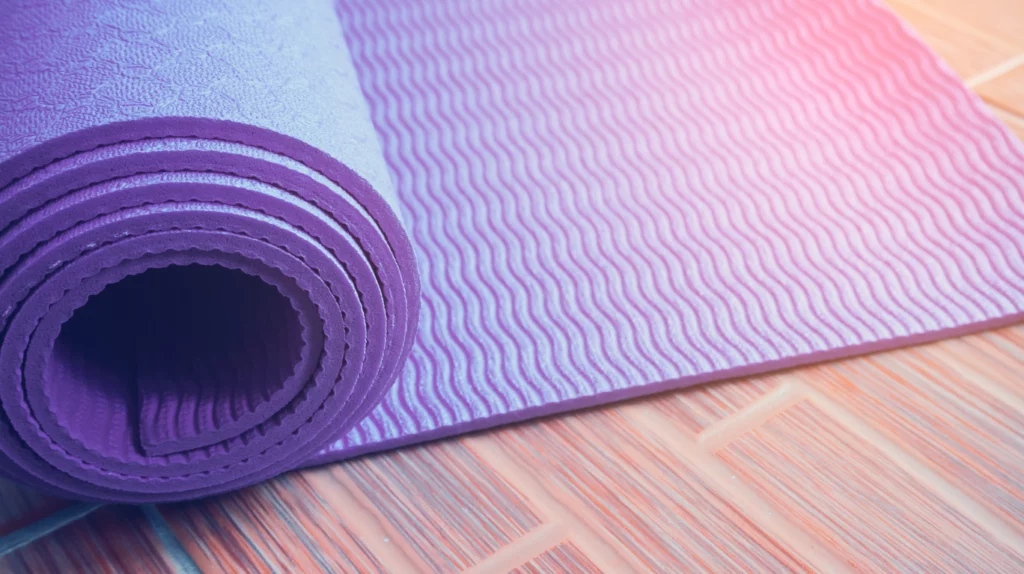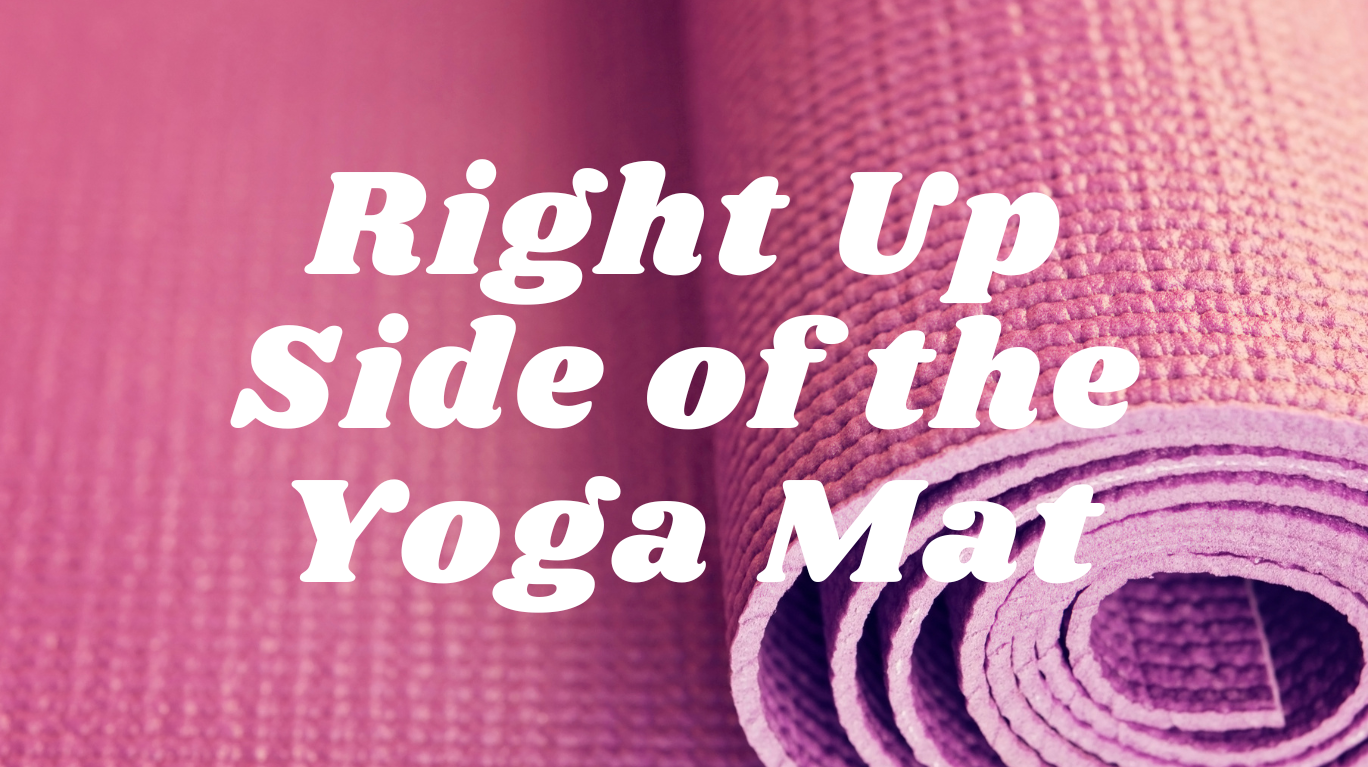In the captivating world of yoga, every little detail matters, and which side of the yoga mat is up is no exception. Have you ever wondered if you’re using your yoga mat the correct way? It’s a common yoga mystery that might be affecting your practice without you even realizing it.
The orientation of your yoga mat can impact your stability, grip, and performance. Imagine how frustrating it is to slip and struggle to keep your balance during yoga poses because your mat isn’t aligned correctly. Understanding which side of the yoga mat faces up can be a game-changer for your yoga experience.
Come and discover how using the right side of your mat can make your practice more harmonious and balanced. Let’s explore which side of the yoga mat is up puzzle together and unlock its incredible benefits.
What is a Yoga Mat?
A yoga mat is a special mat used for yoga to prevent slipping and provide a comfortable surface for yoga poses. Yoga mats are commonly made from materials such as PVC, natural rubber, TPE, or cork. These materials offer different levels of durability, grip, and eco-friendliness.
In addition, they come in different thicknesses from 1/16 inch to 1/8 inch and up to 1/4 inch. They are also available in various colors and patterns. Some have alignment guides or images printed on them.
Does It Matter Which Side of the Yoga Mat Is Up?
It is crucial to use the correct side of the yoga mat to ensure the best yoga experience. The correct positioning enhances stability, grip, and safety during the practice. Using the right side of the yoga mat also prolongs its lifespan.
One side of the yoga mat helps you grip better and stay stable, and the other side is softer and gives more support. Make sure you use the right side for your yoga practice. This helps you get the benefits you want from your mat.
How to Identify Which Side of the Yoga Mat Should be up?

When you get a new yoga mat, you might wonder which side should go up when you start your practice. Knowing the right side is essential because it can affect your grip and comfort during yoga routines. Here we’re to help you identify which side of the yoga mat should be up.
1. Check for Texture
Most yoga mats have two different textures. One side may feel smoother, while the other has a more “tacky” or textured surface. The side with more texture or bumpy side is usually the side that should be facing up during practice. This textured surface provides a better grip and helps prevent slipping during poses. This side also enhances stability during Vinyasa or Ashtanga yoga styles where there’s a lot of movement and transitions. So placing this side up facilitates a secure foundation.
In contrast, the smoother side of the mat provides considerable cushioning and support. This makes it ideal for poses that need more contact with the mat, such as seated or reclined postures. It might not give as much grip as the bumpy side, but it adds to a comfy experience.
2. Look for Branding or Labels
Some yoga mats have branding or labels indicating which side should be up. Check for these markings, like the manufacturer’s logo or a small tag, to find the top side. This side is often made with the user in mind, giving stability, grip, and support.
3. Feel the Grip
If the texture alone doesn’t indicate which side should be up, consider the grip of the surface. The side with a stickier or more grippy feel is likely the top side. It is meant to provide traction for your hands and feet during practice.
4. Inspect for Alignment Guides
Certain yoga mats have alignment guides or markings printed on one side. It is to help practitioners with positioning during poses. If your mat has these alignment features, place the side with the markings facing up.
5. Seek Manufacturer’s Instructions
If you’re not sure, check the manufacturer’s instructions or website for specific guidance on which side of the yoga mat is up. The manufacturer’s recommendations can help you with the intended usage of the mat.
6. Try out the mat
If nothing else works, try practicing with both sides for a short time. See which side feels more comfortable and gives you a better grip. Sometimes, personal preference and comfort play a role in determining which side you prefer to use.
Conclusion
In conclusion, finding out which side of the yoga mat is up is a small but crucial step in your yoga practice. A mat positioned correctly offers better grip and comfort. Look for the textured side, logos, or the grip that feels stickier. These hints tell you which side of the yoga mat should be up. If still unsure, test each side and choose what feels best. Remember, using your mat right can help you with your yoga poses. Keep it simple, and you’ll be on your way to a safer, more effective workout.
Common Queries
What is the correct orientation of a yoga mat?
The correct orientation of a yoga mat is with the textured side facing up. This is because the textured side provides better grip and support for your practice, especially in downward-facing poses.
How do you roll up a yoga mat?
To roll up a yoga mat, start from the long side nearest to you and roll it up, maintaining tension on the mat as you go. Use your hands to apply pressure and roll it up tightly. Avoid applying too much pressure that could damage the mat. Once rolled, store the mat in a protective case or bag to prevent creases or dents.
What is the proper way to use a yoga mat with lines?
When using a yoga mat with lines, it’s important to follow the direction of the lines to ensure proper alignment and balance in your practice. For example, if a line is drawn from the top of your head to the heel of your foot, make sure to align your body accordingly. Also, be mindful of the thickness of the lines and how they may affect your balance and flexibility.
Is it necessary to use a towel on top of a yoga mat?
Using a towel on your yoga mat can give more comfort, but it’s not strictly necessary. If you’re on a hard surface and need extra support, using a towel can help. But if your surface is soft, you might not need one.
What are the features of a high-quality yoga mat?
A high-quality yoga mat should have several features, including:
- A good yoga mat should be thick enough to give comfy support, but not too thick to be hard to move on.
- It should have a good grip to keep you from slipping during practice.
- Look for one made from durable, eco-friendly materials like PVC, rubber, or natural fibers.

